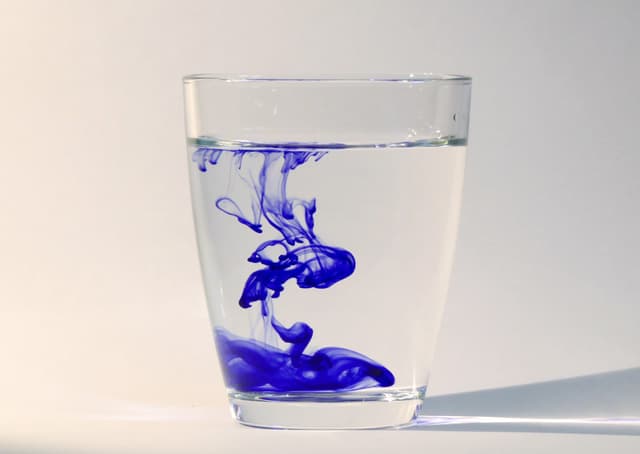Myths about teaching can hold you back
- Year 7
Diffusion
I can explain how particles spread through a fluid.
These resources were made for remote use during the pandemic, not classroom teaching.
Switch to our new teaching resources now - designed by teachers and leading subject experts, and tested in classrooms.
Lesson details
Key learning points
- Brownian motion is the random motion of particles suspended in a medium.
- Particles of a substance released into a fluid (a gas or liquid) move around and are pushed by other particles.
- Substances that have particles that are free to move will eventually reach a random distribution throughout.
- At higher temperatures, particles in a gas or solution move more quickly.
Keywords
Diffusion - The movement of particles from an area where there are lots, until there is a random distribution of particles throughout a medium.
Random - Happens without a clear pattern, making it unpredictable.
Brownian motion - The random movement of particles in a fluid, due to colliding with particles in the surrounding medium.
Medium - A medium is usually a liquid or gas that other substances can mix into or move through, enabling other substances to mix or interact.
Fluid - A fluid is a substance that flows or takes the shape of its container. Liquids and gases can be described as fluids.
Common misconception
Pupil confuse diffusion and Brownian motion.
Brownian motion is the random movement of particles due to collisions. Diffusion is due to concentration differences between 2 substances.
To help you plan your year 7 science lesson on: Diffusion, download all teaching resources for free and adapt to suit your pupils' needs...
To help you plan your year 7 science lesson on: Diffusion, download all teaching resources for free and adapt to suit your pupils' needs.
The starter quiz will activate and check your pupils' prior knowledge, with versions available both with and without answers in PDF format.
We use learning cycles to break down learning into key concepts or ideas linked to the learning outcome. Each learning cycle features explanations with checks for understanding and practice tasks with feedback. All of this is found in our slide decks, ready for you to download and edit. The practice tasks are also available as printable worksheets and some lessons have additional materials with extra material you might need for teaching the lesson.
The assessment exit quiz will test your pupils' understanding of the key learning points.
Our video is a tool for planning, showing how other teachers might teach the lesson, offering helpful tips, modelled explanations and inspiration for your own delivery in the classroom. Plus, you can set it as homework or revision for pupils and keep their learning on track by sharing an online pupil version of this lesson.
Explore more key stage 3 science lessons from the Solutions unit, dive into the full secondary science curriculum, or learn more about lesson planning.

Equipment
Content guidance
- Risk assessment required - chemicals
- Risk assessment required - equipment
Supervision
Adult supervision required
Licence
Prior knowledge starter quiz
6 Questions
Q1.Which state of matter has particles furthest apart from each other?
Q2.Which of these are mixtures?
Q3.If a gas was placed into a container, what would you expect the gas particles to do?
Q4.Match the following scientific keywords with the correct description.
are randomly moving and take the shape of the container
are randomly moving and have no fixed shape
are vibrating and have a fixed shape
two or more substances that can be physically separated
formed when a substance dissolves in a liquid
a substance which flows and can be a gas or a liquid
Q5.What is the scientific term used to describe a substance whose particles can be pushed together into a smaller volume?
Q6.What is the correct working out to show how much solute was used with 145.63 g of water to create a solution with mass 147.59 g?
Assessment exit quiz
6 Questions
Q1.Which word best describes when something happens without a clear, predictable pattern?
Q2.The random movement of particles due to collisions in a fluid is known as motion.
Q3.What is the name given to a material that other substances mix into or move through?
Q4.Jacob is sat in his first floor bedroom. He can smell bread baking in the kitchen on the ground floor. This is due to the process of .
Q5.Which of the following is a true statement about how quickly diffusion occurs?
Q6.Complete the 3 sentences describing what is happening in the picture: The ink and water particles are ____ moving. They ____ together and this causes them to mix. The ink will ____ through the water.



